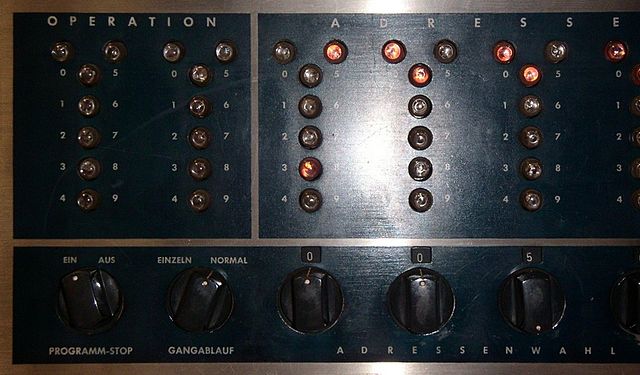The IBM 650 Magnetic Drum Data-Processing Machine is an early digital computer produced by IBM in the mid-1950s. It was the first mass-produced computer in the world. Almost 2,000 systems were produced, the last in 1962, and it was the first computer to make a meaningful profit. The first one was installed in late 1954 and it was the most popular computer of the 1950s.
Part of the first IBM 650 computer in Norway (1959), known as "EMMA". 650 Console Unit (right, an exterior side panel is open), 533 Card Read Punch unit (middle, input-output). 655 Power Unit is missing. Punched card sorter (left, not part of the 650). Now at Norwegian Museum of Science and Technology in Oslo.
IBM 650 at Texas A&M University. The IBM 533 Card Read Punch unit is on the right.
IBM 650 console panel, showing bi-quinary indicators. Note wear marks around frequently used switches, lower right. Collection of the Museo Nacional de Ciencia y Tecnología. A Coruña (Galicia, Spain).
Close-up of bi-quinary indicators
The IBM 701 Electronic Data Processing Machine, known as the Defense Calculator while in development, was IBM’s first commercial scientific computer and its first series production mainframe computer, which was announced to the public on May 21, 1952. It was designed and developed by Jerrier Haddad and Nathaniel Rochester and was based on the IAS machine at Princeton.
IBM 701 operator's console
IBM 701 processor frame, showing 1071 of the vacuum tubes
Vacuum tube logic module from a 700 series IBM computer.
Williams tube from an IBM 701 at the Computer History Museum








